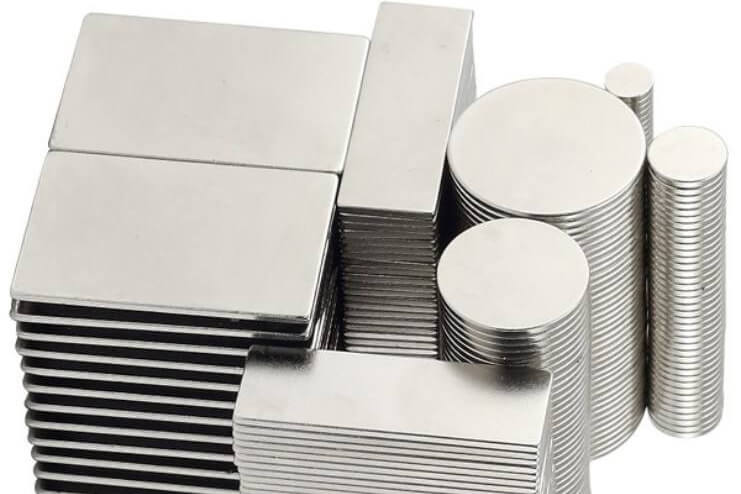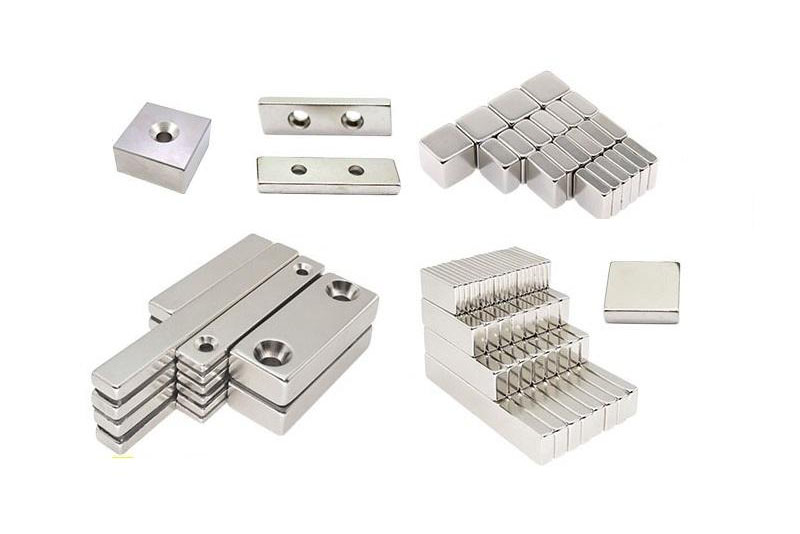Magnetic Levitation with Linear Halbach Arrays
Maglev has fascinated scientists and engineers for decades with its promise of frictionless, high-speed, and contactless motion. Unlike traditional methods that rely on large electromagnets or complex controls, linear Halbach arrays offer a simpler, energy-efficient solution. These magnet arrays focus magnetic flux on one side while canceling it on the other, creating strong, stable fields ideal for levitation.
.jpg)
What Is A Linear Halbach Array?
A Halbach array is a special permanent-magnet structure in which the magnetization direction of each block alternates in a regular pattern. The magnetic field it produces is asymmetric: the flux is focused on one side and almost canceled on the other side.
- Linear Halbach Array: Alternating alignment of magnets in a linear fashion. A strong magnetic field in the "active" side and the opposing side's field reduced.
- Cylindrical Halbach Array: Circular arrangement found in motors and beam focusing, wherein flux is packed inside the cylinder.
For levitation, the linear arrangement is critical. When such an array is moving above a conductive path (e.g., aluminum or copper), the changing magnetic field induces eddy currents. These currents then generate resulting magnetic fields (per Lenz's law), inducing lift and drag forces.
Further reading: Everything You Need to Know About Halbach Arrays
Field Focusing and Flux Cancellation
The benefit of the linear Halbach array is in its ability to control flux distribution:
- Field Maximization: On the "weak side," the field strength is many times higher than that of a regular array of the same magnets. This optimization maximizes levitation efficiency.
- Flux Cancellation: On the "strong side," flux leakage is reduced, which minimizes stray fields and maximizes system safety and performance.
This combination is the reason why Halbach arrays are often termed "one-sided" magnets.
Levitation Mechanism with Linear Halbach Arrays
When a linear Halbach array moves along a conductive guideway:
- Relative Motion: Motion results in the magnetic field atop the track varying with time.
- Induced Currents: The varying field causes eddy currents in the material of the track.
- Magnetic Repulsion: The currents produce opposing fields that repel the array, generating a lifting force.
- Drag Force: A second force arises opposite to the direction of motion that decreases with velocity.
Such self-sustaining process allows for stable levitation after an achieved velocity, without the requirement for active feedback or external power for magnets.
Engineering Considerations
Functional levitation system design with Halbach arrays entails some technical considerations:
- Magnet Grade and Size: Neodymium-Iron-Boron (NdFeB) magnets are well-liked for high remanence and coercivity.
- Array Periodicity: The wavelength of a single complete Halbach cycle dictates magnetic field wavelength and has impact on lift efficiency.
- Material Track: Conductive but not ferromagnetic materials such as aluminum are used to restrict losses while achieving maximum induced currents.
- Speed Threshold: Levitation typically requires a threshold speed to generate sufficient lift. Below this velocity, supports or secondary wheels may be necessary.
- Thermal Effects: Eddy current heating of the track has to be regulated in such a way as to not lead to efficiency losses.
Applications of Linear Halbach Levitation
1.Maglev Transportation:
Linear Halbach arrays are the focus of certain electrodynamic suspension maglev train proposals. They generate strong lift forces without external power other than a brief initial input, allowing high-speed travel with lower maintenance than wheel systems.
2.Magnetic Bearings:
Halbach arrays can produce contactless bearings for machinery that rotates. By eliminating friction, they improve service life and efficiency in turbines, compressors, and flywheels at high speeds.
3.Contactless Conveyance Systems:
In industrial uses, linear Halbach arrays can convey objects along guides smoothly with mechanical wear, which is useful in semiconductor fabrication or cleanrooms.
4. Energy Harvesting and Braking:
The induced currents can also be used for regenerative braking in transportation systems to transform the kinetic energy into electrical energy that can be harnessed.
5. Scientific and Medical Devices:
Halbach levitation is used in vibration isolation of sensitive instruments, frictionless laboratory stages, and even medical imaging equipment where clean magnetic field distributions are essential.
Advantages of Using Linear Halbach Arrays
- No Continuous Power Needed: The magnetic field is maintained without constant energy input.
- High Efficiency: Focused fields enhance levitation while reducing energy waste.
- Low Maintenance: Contactless operation eliminates wear from bearings or wheels.
- Compact Design: Strong magnetic fields require relatively little material.
- Scalable: The system can be adapted from lab setups to full-scale transport.
Conclusion
Linear Halbach arrays are a fascinating combination of lovely physics and practical engineering. Linear Halbach arrays offer a simple, efficient, and scalable approach to magnetic levitation. For more information, please check Stanford Magnets.















